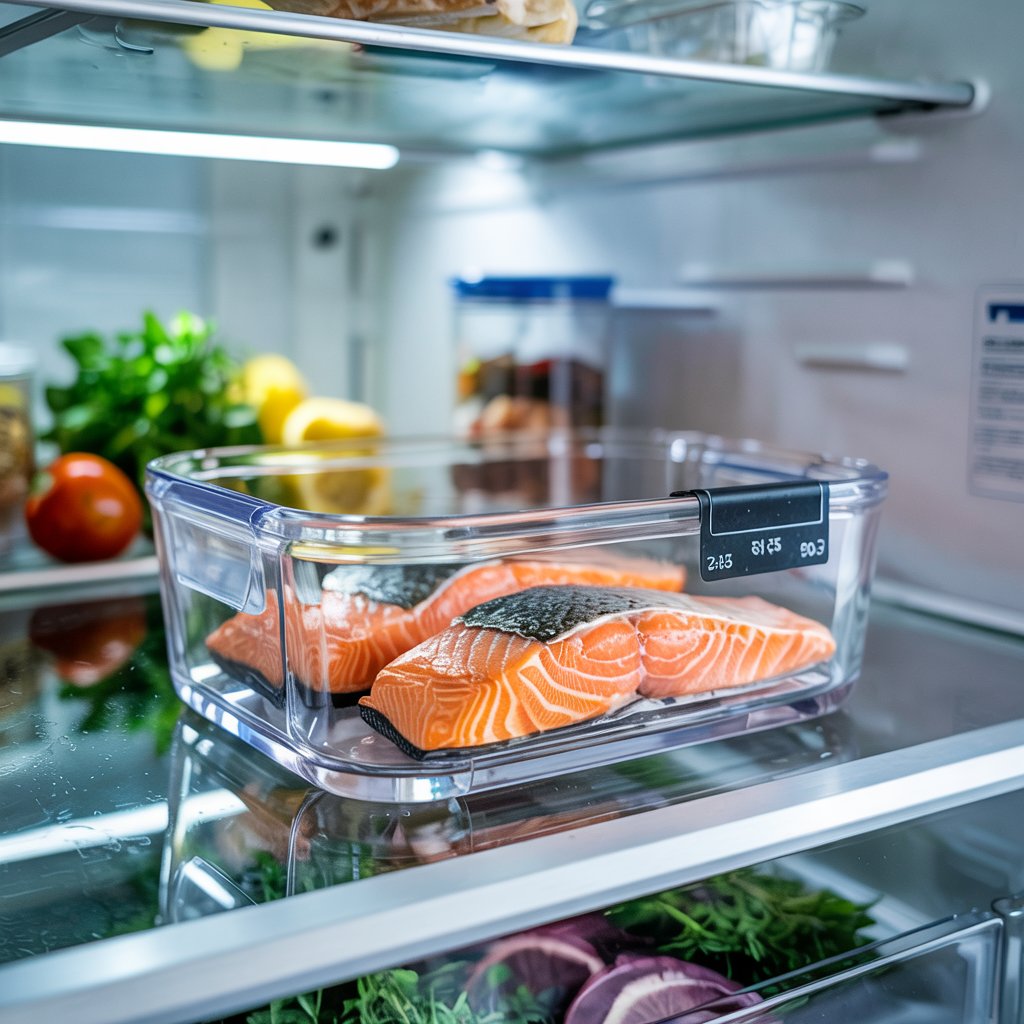If you like healthy meals or enjoy seafood regularly, your mind may ask you a question. How long does cooked salmon last in the fridge? Salmon is one of the healthiest proteins you can add to your diet. But after making a tasty salmon dinner, proper storage is necessary to make sure food safety and protect freshness.
Understanding how long cooked salmon lasts in the fridge helps you to avoid food waste and stop foodborne illness. Let’s have a complete look at the perfect storage duration and signs that your cooked salmon is no longer safe to eat.
How Long Does Cooked Salmon Last in the Fridge;
Cooked salmon can last in the fridge for 3 to 4 days when stored properly. This advice comes mainly from the U.S. Department of Agriculture (USDA). Once the fish has cooled down after cooking, it should be changed to the refrigerator within two hours.
Leaving salmon for more than two hours especially in warm temperatures can cause bacteria to come on salmon rapidly. If the room temperature is above 90°F (32°C), refrigeration should take place within one hour. The faster you cool and store your salmon, the safer it will be to eat later.
Why Proper Refrigeration Timing Is Important;
Bacteria like Listeria monocytogenes and Salmonella thrive at temperatures between 40°F (4°C) and 140°F (60°C), also known as the danger zone. When cooked salmon is remains unrefrigerated, these bacteria can multiply, even if the fish still looks and smells excellent.
Deep-freeze salmon as soon as it’s cool sufficient stops dangerous bacterial growth. This help preserve not only the safety of the food but also its taste and nutritional value.
Best Way to Store Cooked Salmon in the Fridge;
To keep cooked salmon fresh in the fridge, always use tight storage containers. Select high-quality glass containers or BPA-free plastic ones. If you don’t have a container, wrap the salmon securely in aluminum foil or cling film to keep air and moisture out.
These are the steps given below;
- Place the container on the top shelf of your fridge, where the temperature is more solid.
- Keep your fridge set at or below 40°F (4°C).
- Keep away from storing cooked salmon next to raw seafood or meat to secure cross-contamination.
- Always label your storage containers with the date you cooked the salmon.
Signs That Cooked Salmon Has Gone Bad;
It’s not always easy to tell when salmon has spoiled. But, there are small clear measures that your leavings are no longer safe to eat or
smell. A sour, ammonia-like, or overly fishy smell is a powerful sign that your salmon has gone bad.
- Texture: Spoiled salmon often feels slimy or sticky to the touch.
- Color: If your cooked salmon looks boring, gray, or has greenish patches, throw it away.
- Taste: If you take a bite and it flavours “off” or strange, don’t continue eating it.
Spoiled salmon can cause food poisoning, which may lead to stomach cramps, and diarrhea. When you are in doubt, it’s better to be safe and dispose of the leftovers.
Can You Freeze it for Longer Storage?
Yes, freezing cooked salmon is a good choice if you won’t eat it within a few days. In the freezer, cooked salmon can last for 2 to 3 months while supporting better quality.
Here’s how to freeze it correctly:
- Let the salmon cool totally after cooking.
- Wrap each part tightly in plastic wrap or foil.
- Place wrapped section into a freezer-safe ziplock bag or airtight container.
- Label the bundle with the date before storing.
- To thaw frozen salmon, move it to the fridge and let it defrost overnight. Never thaw at room temperature, as that increase bacterial growth.
Reheating Tips Without Losing Flavor;
Reheating salmon requires to be done carefully. If you’re not aware it can become dry and rubbery. Here’s how to reheat it the right way:
- In the oven: Preheat to 275°F (135°C). Place the salmon on a baking sheet, cover it with foil, and heat for about 10–15 minutes
- On the stove: Use a pan on low heat and add a splash of water or broth to keep it moist.
- In the microwave: Use short bursts of 30 seconds and cover the salmon with a moist paper towel.
- Avoid reheating salmon more than one time. Every time you heat it up and the risk of bacterial growth expand.
Tips for Meal Preppers Using Cooked Salmon;
Cooked salmon is a well liked ingredient for meal prepping.If, you are planning lunches for the week or portioning out dinners.
Follow these steps given below:
- Divide the salmon into single servings and store them in separate containers.
- Keep refrigerated portions at the front of your fridge so you remember to eat them first.
- Freeze extra portions if you know you won’t eat them within 3–4 days.
- Add sauces and sides fresh when possible to keep meals tasting fresh.
- Meal preparing with cooked salmon saves time and money, but proper storage keeps it safe and delectable.
How to Extend the Freshness of Leftover Salmon;
If you want to make your salmon last longer without compromising quality?
Follow these easy steps:
- Store it instantly after cooking, not hours later.
- Use clean utensils when transferring leftovers to avoid contamination.
- Avoid usual opening of the fridge door, which can change the temperature.
- Don’t store salmon in the fridge door—temperature fluctuations are higher there.
- Keep raw and cooked foods separate to reduce cross-contamination.
These simple practices can go a long way in protecting the taste, texture, and safety of your cooked salmon.
Final Thoughts on Storing Cooked Salmon Safely;
So, how long does cooked salmon last in the fridge? The answer is up to four days—if stored properly. Keeping your cooked salmon fresh needs quick refrigeration, tight containers, and awareness of spoilage signs. If you can’t eat it in time, freezing is a great way to increase its life. With the right storage techniques, you’ll be able to enjoy salmon leftovers that are tasty and safe.

